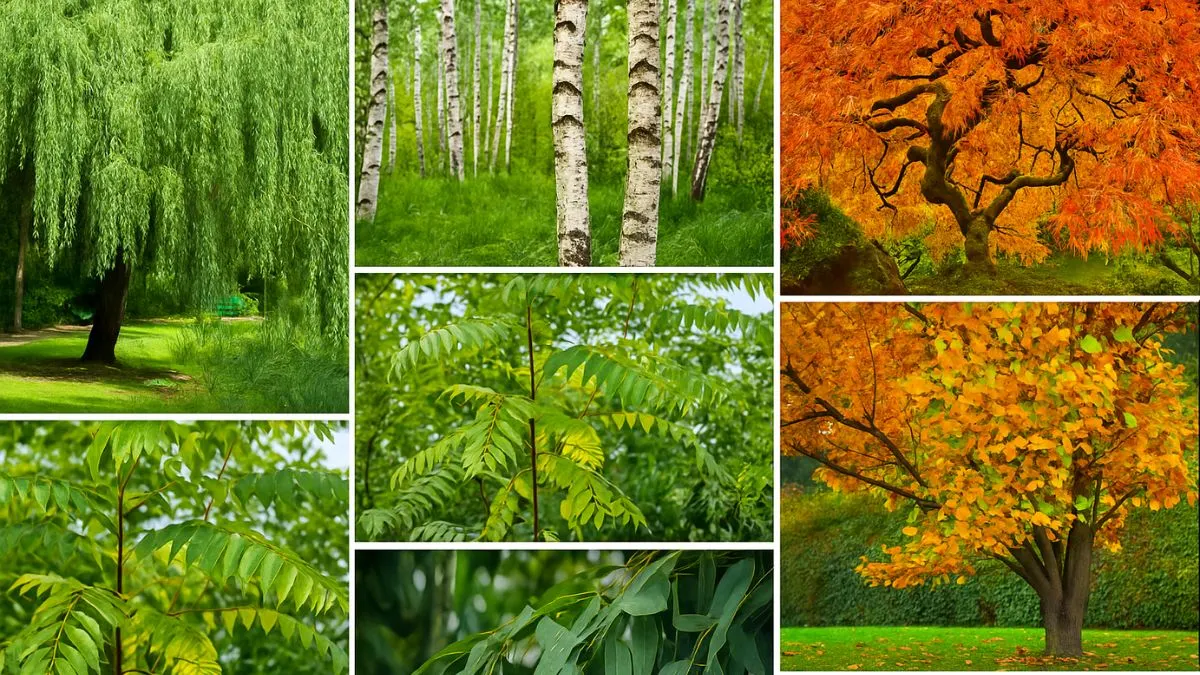Trees add shade, beauty, and value to any property. They keep homes cooler in summer, attract birds, and bring natural calm. But not every tree is a good choice for your yard. In fact, some can cause more harm than good. From damaging foundations to clogging drains or outcompeting native species, certain trees spell long-term trouble.
Here are 7 trees you should never plant near your house, according to experts, and why safer alternatives might be better.
1. Weeping Willow (Salix babylonica)

The Weeping Willow (Salix babylonica) is a sight to behold with its cascading branches and elegant silhouette. But planting it near your home is a mistake.
- Its root system is aggressive, searching far and wide for water.
- Roots can break through underground pipes and even weaken foundations.
- They grow quickly, often reaching 40–50 feet tall, making them difficult to manage in small spaces.
Expert Tip: If you love the willow look, try dwarf willow varieties in containers instead of planting them directly in your yard.
2. Tree of Heaven (Ailanthus altissima)
The Tree of Heaven may sound divine, but in reality, it’s an invasive nightmare. Experts warn that removing tree of heaven helps protect native plants, as it spreads aggressively and outcompetes beneficial species.
- Its roots secrete chemicals that prevent other plants from growing.
- It damages sidewalks and underground utilities.
- It attracts pests like the spotted lanternfly, a major agricultural threat.
Better Option: Replace it with native shade trees like oak or dogwood, which are safer and more beneficial to pollinators.
Also Read: Calla Lily Myths You’ve Never Heard—This Flower Has a Dark Side
3. Maple Trees
There’s no denying that Maple trees are delightful for fall color. Their vibrant red, yellow, and orange foliage is iconic. But before planting one close to your home, think again.
- Some can grow so large that they can ruin your home’s foundation.
- Their shallow roots can lift sidewalks and driveways.
- Sap from certain species like Silver Maple can stain cars, patios, and outdoor furniture.
Expert Tip: If you must plant maples, choose smaller varieties like Japanese Maple and keep them well away from your house.
4. Poplar Trees
Poplars are fast-growing and commonly used for quick shade. But their growth comes with serious consequences.
- Their roots spread widely and aggressively, searching for moisture.
- They can easily invade sewer lines and septic tanks.
- The trees are also prone to disease and storm damage, increasing the risk of falling branches near your home.
Better Alternative: Choose slower-growing, sturdier trees like beech or cedar.
5. Eucalyptus
Native to Australia, Eucalyptus is prized for its fragrance and medicinal oils. But near your home, it can be risky.
- Eucalyptus trees grow extremely tall—sometimes over 100 feet.
- Their brittle branches break off easily in storms.
- The roots are shallow, making them prone to toppling during heavy winds.
Personal Experience: In my neighborhood, a mature eucalyptus tree fell during monsoon rains, damaging two parked cars. Planting them near houses is a gamble not worth taking.
Also Read: The Secret Behind Rajnigandha Fragrance: How to Grow It at Home
6. Black Walnut
The Black Walnut is a majestic tree with valuable timber. But experts caution against planting it close to homes and gardens.
- It releases a chemical called juglone, toxic to many plants like tomatoes, peppers, and azaleas.
- Its large root system can spread far, disturbing lawns and nearby structures.
- Falling walnuts can damage vehicles and pose a slipping hazard.
Safer Alternative: If you love nut trees, pecan or chestnut varieties are friendlier to nearby landscapes.
7. Silver Birch
With its white bark and delicate leaves, the Silver Birch is undeniably attractive. Yet, planting it near a house is not recommended.
- Its roots are shallow but invasive, often damaging patios and underground wiring.
- The tree has a short lifespan, often weakening after 20–30 years.
- Pollen from birch trees is a common allergen, which can make life uncomfortable for sensitive family members.
Also Read: Stachys Plant: Nature’s Soft Bandage With Healing Powers
Trees to Avoid
Tree Name |
Main Issue |
Safer Alternative |
Weeping Willow |
Aggressive roots, foundation damage |
Dwarf willow varieties |
Tree of Heaven |
Invasive, harms native plants |
Oak, Dogwood |
Maple Trees |
Large roots, foundation risk |
Japanese Maple |
Poplar Trees |
Invade drains, disease-prone |
Beech, Cedar |
Eucalyptus |
Brittle branches, wind risk |
Magnolia |
Black Walnut |
Releases juglone, harms other plants |
Chestnut, Pecan |
Silver Birch |
Allergies, root problems |
Redbud, Serviceberry |
While trees bring shade, beauty, and wildlife to our yards, choosing the wrong species can create costly problems. Always consult a local nursery or landscaper for safe alternatives suited to your climate.
Think long-term when planting. Trees may take decades to mature, but the wrong choice today could mean expensive repairs tomorrow.






